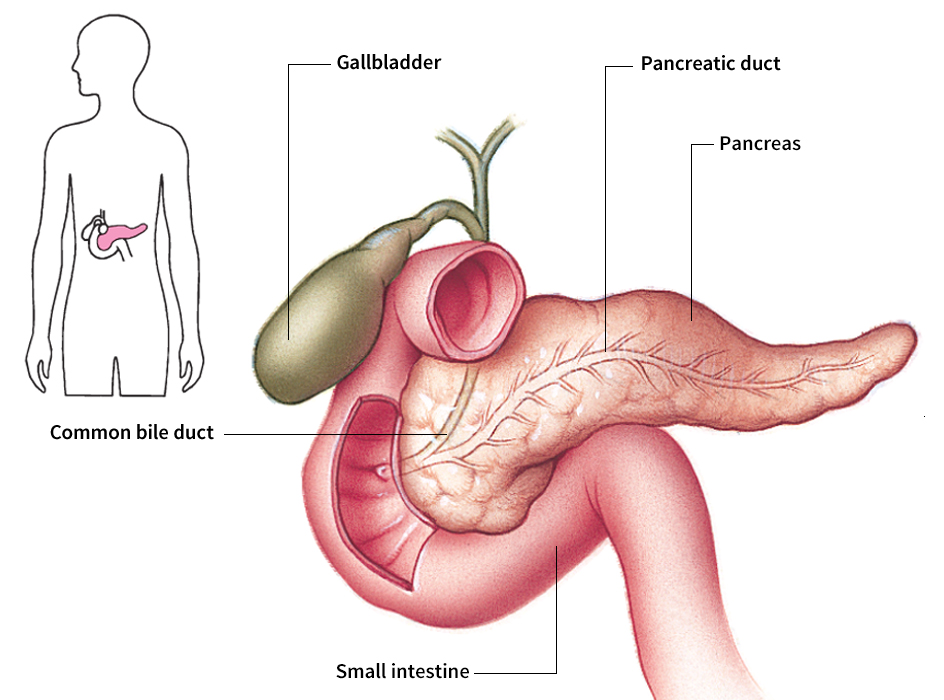Pancreas, << PAN kree uhs, >> is a body organ found in human beings and all animals with backbones. It produces digestive juices required to break down foodstuffs. It also produces insulin and glucagon, two hormones needed to regulate the body’s sugar balance and metabolism (see Metabolism ).

The human pancreas is a pinkish-yellow gland about 6 to 8 inches (15 to 20 centimeters) long, 11/2 inches (3.8 centimeters) wide, and 1 inch (2.5 centimeters) thick. It lies crosswise, behind the stomach. The first part of the small intestine, the duodenum, loops around the pancreas. Digestive juices secreted by the pancreas flow through a duct into the duodenum. The secretion contains water and salts that aid the digestive process and neutralize stomach acids. Enzymes in the secretion help to break down proteins, starches, and fats.
Small clusters of special cells called the islets (or islands) of Langerhans are scattered throughout the pancreas. The cells secrete hormones directly into the bloodstream. There are several types of islet cells, including alpha cells and beta cells. Insulin is produced by beta cells. Insulin travels through the bloodstream to cells throughout the body. It enables cells to take in and use glucose from the blood. Glucose, a sugar, is the main fuel of the body’s cells. If the pancreas secretes too little insulin, a serious form of the disease diabetes mellitus results (see Diabetes ).
The alpha cells secrete glucagon. Glucagon causes the liver to release stored glucose into the bloodstream. Glucagon and insulin work together to regulate the level of glucose in the blood.
